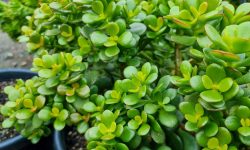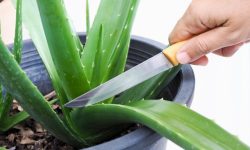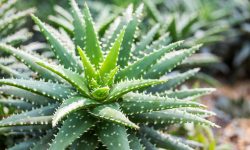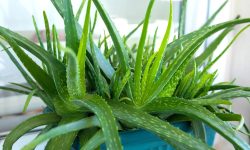Jade plants have become one of the most popular houseplants for new and experienced growers. Their thick leaves, slow growth, and sculptural form create a living display that feels steady and long-lasting. Many plant owners want to expand their collection, and propagation is the easiest way to do that. The process may look simple from the outside, yet healthy propagation requires understanding how this succulent responds to moisture, air, and light. That foundation helps each cutting establish roots with confidence and stability.
Propagating a jade plant is not only a practical method of multiplying your greenery. It also allows you to shape the future growth of your plant with care and intention. Each new cutting becomes a young plant with its own structure and pace. The process strengthens your insight into how jade plants survive stress, create new tissue, and adapt to small changes. When done correctly, propagation offers reliable results and healthier plants overall.
Understanding Jade Plant Propagation
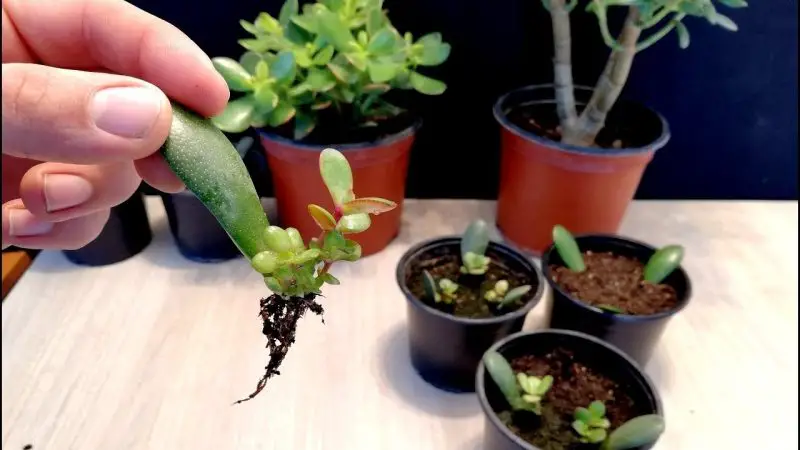
Learning how jade plants respond to propagation helps you create stronger and more predictable growth. These succulents store water inside their leaves and stems, so they depend on slow moisture changes during early rooting. Each cutting must adapt to a new balance of airflow, warmth, and soil texture. When you understand these needs, you reduce stress on the plant and increase its chances of forming healthy roots. This early stage decides the future strength of your new jade plant. Many growers overlook these early conditions, yet they shape the long-term growth pattern of every propagated plant.
Propagation works because jade plants naturally repair damaged tissue. The cut end forms a callus that protects the plant and prepares it for rooting. This callus allows the cutting to regulate moisture without losing too much water. Once the tissue hardens, new root cells begin to develop at a gradual pace. The process feels slow, but this steady rhythm matches the nature of jade plants. It also helps prevent rot or fungal problems that appear when moisture levels are unstable. The controlled healing process creates a buffer that supports the cutting while it adjusts to its new conditions.
Successful propagation also depends on choosing the right environment. Jade plants root well in warm rooms with gentle airflow and bright indirect light. Their young tissues need steady brightness without harsh heat. The soil should drain well to avoid moisture pockets around the stem. Consistent conditions help the cutting shift from survival mode to active growth. When these elements align, jade plants form strong roots and stable stems. This foundation leads to healthier plants that adapt well in the long term. A well-rooted jade cutting will continue to grow evenly and respond better to future care routines.
Choosing the Right Jade Plant Cutting
Selecting the proper cutting plays a major role in successful jade plant propagation. A healthy cutting carries enough stored moisture to support new growth without stress. It should come from a mature branch that shows firm structure and bright green color. The stem must feel solid when pressed, as soft or wrinkled tissue indicates hidden damage. A good cutting also contains several leaf nodes, which act as natural points for root formation and early development. This first step shapes the strength of the future plant. Choosing wisely prevents many issues that appear later during rooting.
The best cuttings come from branches that grow in balanced light. These branches show strong color and even spacing between nodes. Avoid stems that have stretched due to low light, since they root slowly and weaken over time. A cutting from a well-lit area offers higher energy reserves, which support steady root development. Healthy leaves also help regulate moisture during the first days after removal. Their stored water protects the stem while it forms a protective callus. This moisture reserve works like a buffer that keeps the plant stable during the adjustment period.
Before you remove the cutting, examine the mother plant closely. It should show no signs of pests, mold, or leaf distortion. A clean plant produces cleaner tissue, which reduces the chance of rot. Choose a branch that sits away from crowded areas, since tight growth can hide small problems. After selecting the stem, use a sharp tool to create a clean cut. This smooth surface heals faster and forms a stronger callus. The quality of the original plant influences the rooting process more than many growers expect. A strong cutting sets the foundation for reliable growth and future stability.
Preparing the Jade Cutting for Rooting
Proper preparation ensures the cutting develops roots in a steady and predictable way. After removing the stem, place it in a clean and dry location with gentle airflow. The surface of the cut must dry slowly until a firm callus forms. This callus functions like a shield that protects the tissue from excess moisture. Without this protective layer, the cutting absorbs water too quickly and becomes vulnerable to rot. A well-formed callus supports calm and controlled root development during the early stages. This drying process also helps the cutting adjust to its new environment.
The callusing period usually takes several days, depending on warmth and humidity. Warmer rooms encourage faster drying, while cooler spaces slow the process. During this time, keep the cutting away from direct sunlight, because bright heat can dehydrate the tissue too quickly. The cutting should feel firm and dry before planting. If the surface remains soft, give it additional time to harden. Rushing this stage increases the risk of fungal growth once the cutting touches soil. Patience ensures the jade plant enters the rooting phase with stronger resilience.
Before planting the cutting, examine the leaves and stem carefully. Remove any damaged leaves to prevent early decay in the soil. Check the cut end again to confirm the callus is even and smooth. If you prefer water propagation, rinse the stem gently to remove dust before placing it in a clean container. For soil propagation, prepare the stem by brushing off loose debris that might trap moisture. These small steps help the cutting remain stable during the first weeks of rooting. Proper preparation strengthens the plant’s ability to form consistent roots and grow with long-term stability.
Creating the Ideal Soil Conditions
Healthy jade plant propagation begins with the right soil structure. Jade plants depend on fast drainage because their thick tissues store large amounts of water. When soil traps moisture for too long, the cutting struggles to regulate hydration. A well-designed mix helps the new roots breathe and grow. The best medium feels light in the hand and breaks apart easily when pressed. This loose structure prevents compacting, which is a major cause of early rooting failure. Good soil encourages steady moisture without creating wet pockets that damage delicate tissue.
A proper mix often contains a blend of coarse sand, perlite, and well-aerated potting soil. These components create a balance between moisture control and airflow. Perlite improves oxygen flow around the forming roots, while sand prevents water from lingering near the stem. A jade cutting thrives when its root zone warms evenly and stays dry between light waterings. Dense mixes hold water for too long, so avoid heavy soils made for tropical plants. A jade cutting grows best when the soil mimics natural arid environments. This approach supports slow, healthy root expansion.
Before planting, prepare the pot with fresh soil to reduce the chance of pathogens. Containers with wide drainage holes allow excess water to escape quickly. Fill the pot loosely so the cutting slides easily into place without pressure. Firm soil around the base gently but avoid packing it tightly. The cutting needs space for early roots to stretch and anchor. Once planted, let the soil rest before watering, because fresh mix sometimes releases trapped moisture. Good soil conditions create the foundation for long-term growth and resilient root development in every jade cutting.
Planting the Cutting for Successful Root Development
Planting the cutting is a careful process that shapes early growth and long-term stability. Once the callus forms, place the cutting gently into the prepared soil. Insert it only deep enough to keep the stem upright without strain. A shallow placement reduces moisture exposure and supports better airflow around the base. Avoid pressing the soil too firmly because tight packing limits oxygen movement. The cutting needs room to expand new roots at a natural pace. A stable but breathable setup encourages stronger rooting and reduces stress during the first days.
After planting, leave the soil completely dry for several days. This waiting period protects the callus from sudden moisture that may lead to rot. A jade cutting benefits from slow hydration during early establishment. When the soil receives its first light watering, apply it around the base without flooding the container. Moisture should move through the soil evenly and exit the drainage holes. A cutting absorbs water gradually, so excess moisture offers no benefit. Observing how the soil dries helps you adjust watering patterns for optimal root formation.
Keep the planted cutting in a warm area with bright but indirect light. Avoid direct sun because young tissue burns easily during early rooting. A steady environment supports calm growth and stable hydration. Do not disturb the cutting by checking for roots too soon. Early movement weakens forming tissues and slows development. Instead, monitor leaf firmness as an indicator of progress. Firm leaves suggest hydration balance, while soft leaves warn of stress. When planted correctly, the cutting transitions into root production with confidence and steady strength. This early success shapes the future health of your jade plant.
Providing the Right Light and Temperature
Light and temperature shape the pace and stability of jade plant propagation. A cutting needs bright but indirect light to maintain strong internal energy without overheating. Direct sunlight can scorch new tissue and pull moisture from the stem too quickly. Bright filtered light supports photosynthesis and keeps the cutting active while roots form slowly below the surface. A steady light pattern prevents stress during early development. This simple balance encourages controlled growth and better long-term structure.
Temperature also plays a major role in rooting success. Jade cuttings prefer warm environments that remain stable throughout the day. Sudden shifts in temperature interrupt early cellular activity. Warm air encourages root initiation by supporting steady moisture flow inside the cutting. Cooler rooms slow the rooting process and increase the chance of fungal problems. The best environment feels warm but not humid, with consistent airflow that prevents stagnant conditions. These factors help the cutting maintain a calm rhythm as it builds new tissue.
During the first weeks, check how the cutting responds to its environment. If leaves soften, the light may be too intense or the temperature too high. If the cutting appears dull or sluggish, move it closer to brighter light without exposing it to direct rays. Observing these signs helps you adjust conditions before problems form. Root development remains hidden underground, so environmental control becomes your main tool during this stage. When light and temperature stay balanced, the cutting grows with confidence and prepares for stronger growth once roots establish.
Watering Techniques for Rooting Success
Watering plays a central role in jade plant propagation because jade cuttings depend on controlled moisture. A cutting without roots cannot process water efficiently, so excess moisture leads to soft tissue and rot. Light watering supports gradual hydration while protecting the callus. The soil should feel dry before every watering because dry cycles encourage the cutting to seek moisture by forming new roots. This balanced rhythm prevents stress and builds a strong rooting foundation. Understanding this pattern helps you create predictable and healthy growth.
During early rooting, water should move through the soil quickly and drain without pooling. A jade cutting benefits from light moisture that surrounds the base without flooding the surface. When water drains well, oxygen remains available for root development. Roots require air to grow properly, and overly wet soil blocks airflow. If the soil stays wet for too long, fungal issues appear around the stem. Checking the soil by touch helps you decide when to water. Dry soil signals the ideal moment for the next light watering cycle.
As the cutting begins to root, its water needs change slowly. New roots absorb moisture at a measured pace, so avoid increasing your watering frequency too soon. Watch the leaves to understand hydration. Firm leaves indicate stable moisture, while soft leaves suggest overwatering or weak root activity. Adjust watering based on these signs rather than a fixed schedule. A jade cutting thrives when moisture feels gentle and predictable. This method supports strong and even root development, preparing the plant for future growth with greater stability and resilience.
Monitoring Root Growth and Early Development
Monitoring root growth helps you understand how well the cutting is adapting to its new environment. Root formation begins slowly, so you must observe subtle changes above the soil. Firm leaves suggest stable hydration, while shriveled leaves may indicate stress. A healthy cutting maintains steady color and structure during early development. Avoid lifting or moving the cutting because early roots break easily. Observing without disturbance allows the plant to grow with calm and consistent energy. This passive approach supports stronger long-term rooting.
As weeks pass, the cutting begins to show small signals of progress. New leaf growth near the top often indicates developing roots below. A slight increase in stem firmness also suggests internal strength. If the cutting remains soft or unstable, adjust the light or watering schedule to create better conditions. Rooting patterns differ based on temperature and soil texture, so patience becomes essential. Do not dig into the soil to check for roots, because this disrupts delicate tissues. Trust the outward signs and allow the plant to build internal stability at its own pace.
Once roots establish, the cutting gains noticeable strength. Leaves recover firmness and show brighter color, while the stem sits more securely in the soil. At this stage, the plant responds well to brighter light and slightly more frequent watering. New roots anchor the plant and support better nutrient flow. Early development sets the tone for future growth, so maintaining steady conditions continues to matter. A healthy rooting period prepares the jade plant for robust expansion, shaping a strong foundation that supports long-term health and stable structural growth.
Preventing Common Propagation Problems
Rot Prevention in Jade Plant Cuttings
Rot is the most common issue during jade plant propagation because young cuttings cannot regulate moisture well. The problem usually begins when the soil remains wet for long periods, especially before roots form. A cutting with a soft or darkened base often indicates early decay. Allowing the cut end to develop a firm callus helps reduce this risk. A callus protects the tissue from direct moisture. Dry soil supports this protective process and gives the cutting time to stabilize. Jade plants handle dryness well, so less water creates a safer rooting environment.
A well-draining soil mix reduces the chances of rot by encouraging fast water movement. Containers with wide drainage holes also help maintain a dry and airy base. Bright indirect light strengthens the cutting, allowing it to dry evenly after watering. Rot prevention requires patience because rushing the first watering often creates problems. Touch the soil before watering to check for dryness. Dry conditions are essential during the early stages. When moisture remains controlled, the cutting forms healthier tissues and prepares for stable root development.
Encouraging Strong and Steady Root Formation
Slow or weak root formation often appears when the cutting grows in low light or cold temperatures. Jade plants require warmth to activate new cell growth, so cooler rooms delay rooting. The cutting also needs bright indirect light to maintain stored energy. Without this energy, the plant struggles to produce new roots. Moving the cutting to a warmer and brighter location often restores balance. Avoid direct sunlight because young tissues burn easily. Consistent lighting helps the plant maintain steady hydration and internal strength.
Avoid shifting the cutting too frequently because frequent movement interrupts early development. Stability supports root formation by allowing the plant to adjust gradually. Overwatering also slows rooting because excess moisture reduces oxygen around the stem. Roots need oxygen to grow effectively. Light watering encourages the cutting to search for moisture and form new roots. Observing leaf firmness helps track progress. Firm leaves signal better root activity, while soft leaves suggest stress. Balanced light, warmth, and moisture encourage strong and predictable root formation.
Managing Pests During Early Propagation
Pests sometimes appear during propagation when humidity stays high or airflow remains low. Mealybugs, fungus gnats, and small mites prefer damp and still environments. Their presence drains energy from the cutting and slows rooting. Checking the leaves regularly helps you detect early infestations. Wipe affected areas gently with a clean cloth to remove small insects. Good airflow reduces humidity and prevents fungal spores from settling on the plant. Clean tools and fresh soil also reduce hidden risks.
If pests remain, adjust watering because moist soil attracts gnats and encourages mold. Allow the soil to dry completely before watering again. Light and warmth also help the plant resist pests by strengthening its natural defenses. Move the cutting to a brighter area with indirect light to discourage insects. Avoid chemical treatments during early rooting because young tissue reacts strongly. Simple cleaning and environmental adjustments usually resolve early pest issues. Managing pests quickly protects the cutting’s energy and helps it focus on root development in a calm and stable environment.
Caring for Newly Rooted Jade Plants
Caring for newly rooted jade plants requires a gentle approach because young roots remain delicate during the first weeks. These new roots absorb moisture slowly, so controlled watering becomes essential. Keep the soil dry between waterings to prevent stress. A young jade plant continues building internal strength during this stage. Bright indirect light supports leaf development while avoiding the intense heat that damages new tissues. A balanced environment helps the plant transition from rooting to steady growth. Patience during this period leads to stronger long-term health.
As the plant grows, monitor leaf firmness and color to understand its progress. Firm leaves suggest proper hydration, while soft leaves indicate moisture issues. Color changes may signal stress from light or temperature. Adjust conditions gradually because sudden shifts interrupt growth. Wide airflow around the plant reduces humidity and prevents fungal problems. Avoid fertilizing too early because young roots react poorly to strong nutrients. Light conditions matter more than added nutrition in this stage. A stable routine builds confidence in the new plant.
Once the jade plant adjusts to its environment, new growth appears more often along the stem. This development signals stronger roots that support increased water uptake. When the plant shows consistent progress, introduce more light to encourage compact growth. Water slightly more often but remain cautious to avoid excess moisture. Wait several weeks before offering weak fertilizer, allowing the roots to mature fully. Strong roots create a firm anchor for the plant. Proper care during early stages shapes the plant’s structure and prepares it for many years of stable growth.
Transitioning Rooted Cuttings to Regular Care
Transitioning rooted cuttings to regular care requires patience because jade plants adapt slowly to new routines. Newly rooted plants need time to strengthen their internal structure before facing brighter light or increased watering. Keep the environment calm and steady so the young plant maintains its balance. Gradual adjustments help prevent stress during this transition. Avoid sudden changes in temperature or lighting, because young tissues respond poorly to rapid shifts. A smooth adjustment period supports consistent development and prepares the plant for long-term growth.
Increase light exposure in small steps once the plant shows stable progress. Brighter indirect light encourages compact growth and stronger coloration. If leaves appear stressed, reduce light slightly until the plant adjusts. Watering schedules also change during this stage. Roots absorb moisture more effectively now, but overwatering still creates problems. Continue letting the soil dry between waterings to support healthy root expansion. As growth improves, the plant becomes more resilient and responds well to a regular routine. These controlled adjustments help the jade plant adapt without discomfort.
Nutrient needs also shift as the plant strengthens. Newly rooted cuttings cannot handle full-strength fertilizer, so use diluted options during early feeding. Apply fertilizer sparingly to support balanced growth without overwhelming the roots. Monitor the plant for changes in color, firmness, or leaf growth. These signals guide you in adjusting care routines. When the plant responds with steady new growth, it has officially moved beyond the propagation phase. Stable care and consistent conditions create a strong foundation for future development and long-lasting health.
FAQs About Propagating Jade Plant
How long does a jade cutting take to root?
A jade cutting usually takes several weeks to form early roots. Warm temperatures and bright indirect light speed up development. Dry cycles help strengthen the new tissues. Root growth remains slow but steady. Patience ensures healthier long-term results.
Why is my jade cutting not rooting?
A cutting may fail to root due to cold temperatures, low light, or excess moisture. Jade plants need warmth to build new cells. Allow the soil to dry between waterings. Keep the cutting in bright indirect light. Stable conditions support consistent root formation.
Can I propagate jade plants in water?
Yes, jade plants can root in water, but the process works slower than soil propagation. Keep the water clean and change it regularly. Place the cutting in bright light without strong heat. Roots develop gradually and require careful handling when transferred to soil.
When should I water a newly planted cutting?
Water only after the soil becomes completely dry. Early watering must be light and controlled. A cutting without roots absorbs moisture slowly. Overwatering causes stress and increases the risk of rot. Dry cycles help the plant adjust and form stronger root structures.
Should I use fertilizer on a young jade cutting?
Avoid fertilizer during early rooting because young roots react strongly to added nutrients. Wait until the plant shows steady new growth. Use a diluted formula and apply sparingly. Balanced feeding supports the plant without overwhelming developing tissues. Gentle care ensures long-term health.
Final Thoughts
Propagating a jade plant offers a rewarding way to expand your collection and understand the plant’s natural rhythm. Each stage of the process encourages patience and helps you observe how jade plants respond to light, moisture, and gentle care. A healthy cutting becomes a strong plant when conditions remain steady and predictable. By focusing on callus formation, controlled watering, and balanced light, you support long-term stability. Rooted cuttings grow slowly but develop impressive resilience with time. When you guide your jade plant through each step with care, the process becomes simple and enjoyable. The result is a thriving plant that reflects careful attention and consistent support.



